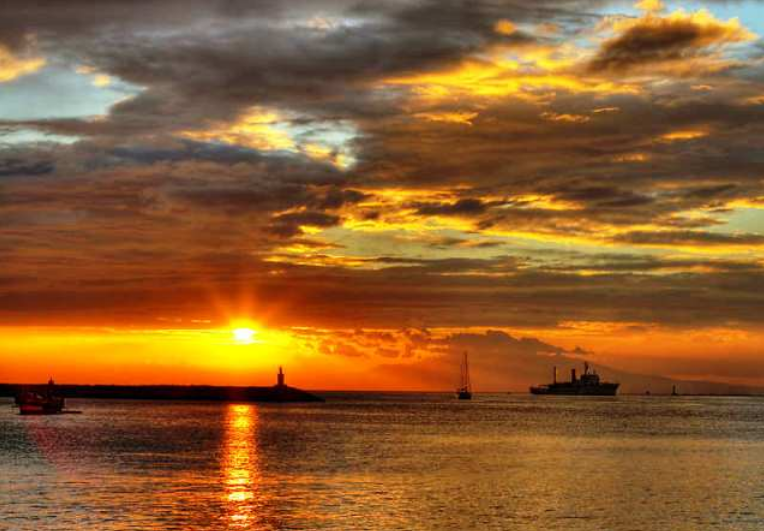Research group IBON said that the Manila Bay reclamation project under the Build, Build, Build program is a profit-led infrastructure plan that will mainly benefit big business. The group said that contrary to government claims, the project will displace nearby communities from their homes and livelihoods and destroy the environment.
The Manila Bay Reclamation project involves a series of infrastructure reclamation projects spanning the coasts of Bulacan, Manila, Pasay, and Cavite. According to the Philippine Reclamation Authority, there are a total of 22 proposed projects for Manila Bay alone, four of which have been approved. The project is under the “Operational Plan for the Manila Bay Coastal Strategy (OPMBCS)” by the Japan International Cooperation Agency (JICA). It aims to tap private sector investments to develop Manila Bay and supposedly usher economic growth.
IBON said that there are a number of corporations set to build and profit from these projects during the Manila Bay Reclamation. The largest and most expensive of these are being carried out by the San Miguel Corporation (SMC) led by Ramon Ang. The Php735-billion Bulacan International Airport or Aerotropolis will reclaim around 2,500 hectares of Manila Bay waters, and the Php400-billion Manila Bay Integrated Flood Control project will reclaim 11,200 hectares.
The Php72-billion Pasay Harbor Reclamation Project will be built by the Pasay Harbor City consortium made up of the Udenna Development Corp. (UDEVCO), Ulticon Builders, Inc., and China Harbour Engineering Company Limited. The project will reclaim and develop 265 hectares for various tourist attractions, high-rise and low-rise condominiums, and a yacht pier.
IBON observed that long-time Duterte supporter and Davao businessman Dennis Uy has a stake in these reclamation projects through his company UDEVCO. A top contributer to Duterte’s 2016 presidential campaign, Uy’s companies have so far bagged under the administration the original proponent status for the Davao Monorail Project; the Department of Energy’s nod to develop the country’s first liquified natural gas terminal together with Chinese firm, CNOOC Gas and Power Group Co. Ltd; as well as the third telco slot under the Mislatel consortium.
Other big companies with projects lined up in Manila Bay include the Manila Solar City Project of the Manila Goldcoast Development Corp (MGDC), a subsidiary of the Wilson Tieng-led Solar Group of Companies, and the Sy Family with various reclamation projects in Pasay City.
Mostly urban poor communities stand to lose their homes and livelihoods to make way for reclamation projects, said the group. The government announced its plan to relocate around 220,000 families living in Manila Bay to National Housing Authority (NHA) relocation units in Central Luzon and Southern Tagalog. But the plan for livelihood and services provision remains to be seen. Meanwhile, the livelihoods of 5,000 fisherfolk will be affected by SMC’s Aerotropolis. According to national fisherfolk federation, Pamalakaya, 20,000 fisherfolk will be affected by the construction of the Navotas Boulevard Business Park, part of the reclamation project.
Moreover, documents from the Environmental Management Bureau (EMB) state that the projects will have ecological impacts in Manila Bay. Throughout the construction of the various projects, contaminants from dredged sediments will be released, deplete dissolved oxygen, and destroy natural habitats of sardines and mangroves found in Manila Bay. Once finished, the projects will interfere with the natural tide flow of water in the area and erode the shoreline of nearby beaches. The erosion could cause flooding in nearby low-lying areas especially during a typhoon.
IBON said that with the data from the EMB, all the more, government should follow its own environmental impact assessment.
IBON also said that while Manila Bay should be rehabilitated, the government’s current plan serves the interest of a profit-minded few and will cause significant displacement and environmental damage. The government should suspend the Manila Bay reclamation project and develop a rehabilitation plan that is environmentally sustainable and will improve the conditions and livelihoods of people living in Manila Bay, said the group. ###

